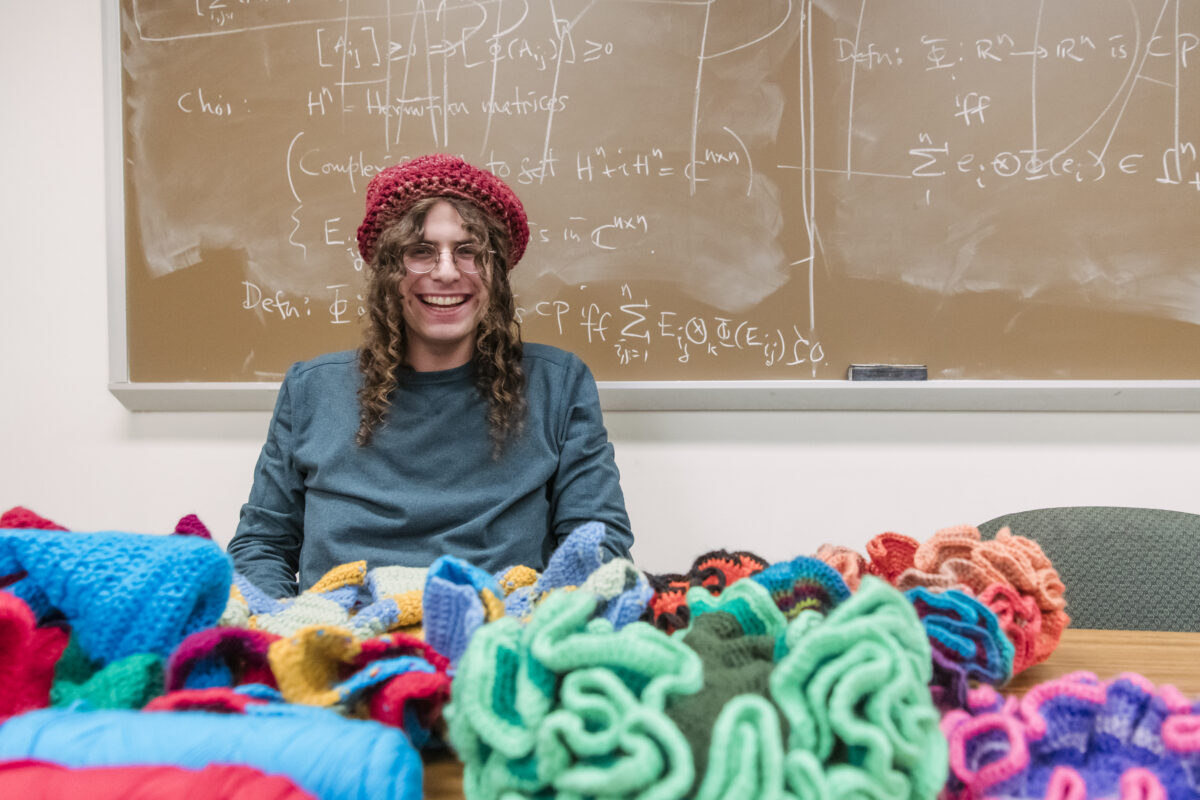UMBC biologist Erin Green has received a five-year, nearly $1 million grant from the National institutes of Health to examine how cells respond to environmental signals at the molecular level. Her work could provide clues to understanding processes as broad as how cancers take hold, the causes of autism, and aging.
“Any cell, in any species, is constantly bombarded with different signals from its environment,” says Green, assistant professor of biological sciences. Those signals, she explains, “have consequences for how the cell grows, whether it lives or dies, or if it stays as it is or turns into something else, like a cancer cell.”
Green studies epigenetic modifications—changes to DNA that do not involve a change in the sequence of bases (A, T, G, and C). Inside cells, long strands of DNA are wound tightly around proteins called histones. The modifications Green studies involve adding or removing small groups of atoms to the histones, influencing which sections of DNA are “unwound” and eventually translated into protein.

Epigenetic modifications can impact how genes are expressed within minutes, making them one of the fastest ways a cell can respond to environmental signals. “One challenge in the field, though, is directly linking specific modifications to environmental changes,” Green notes. There are many studies that correlate certain epigenetic changes with diseases or environmental conditions—from air pollution to in utero alcohol exposure—but figuring out exactly how the changes lead to complex health conditions has been much trickier.
Green’s work will explore the mechanism of a particular enzyme that adds methyl groups to histones, one of the most common epigenetic changes, using budding yeast as a model organism. Her enzyme is within a class of proteins that is also found in humans, and so far, she says, “many of the things that we know about them in humans started out in yeast research.” The human version of the enzyme Green is studying, a gene called MLL5, is already known to be expressed differently in some cancers, mutated in some cases of autism, and required for male fertility.
Why use yeast in her research? With yeast, Green explains, “we can test many conditions and look at the direct biochemical and molecular outcomes, which is much harder to do in other systems.” She’ll start by looking at how exposure to certain toxic oxygen compounds, a situation known as oxidative stress, affects the enzyme’s activity.

Green’s earlier work, supported by a UMBC START award, looked much more narrowly at a specific enzyme activity, but this new grant will allow her lab to paint with a broader brush. “We’ve been looking in a very targeted way,” she says. “By doing this bigger, more open-ended experiment we might uncover other things that would be good to look at. Are there other stress response pathways that this enzyme might be controlling?”
“I think having a system where we can directly answer these questions in a more controlled and easily manipulated environment is really powerful,” Green says. “If we’re able to…learn more about the function of this enzyme in yeast, that’s likely to give us a handle on what it might be doing in humans.”
Banner image: Erin Green. All photos by Marlayna Demond ’11 for UMBC.




